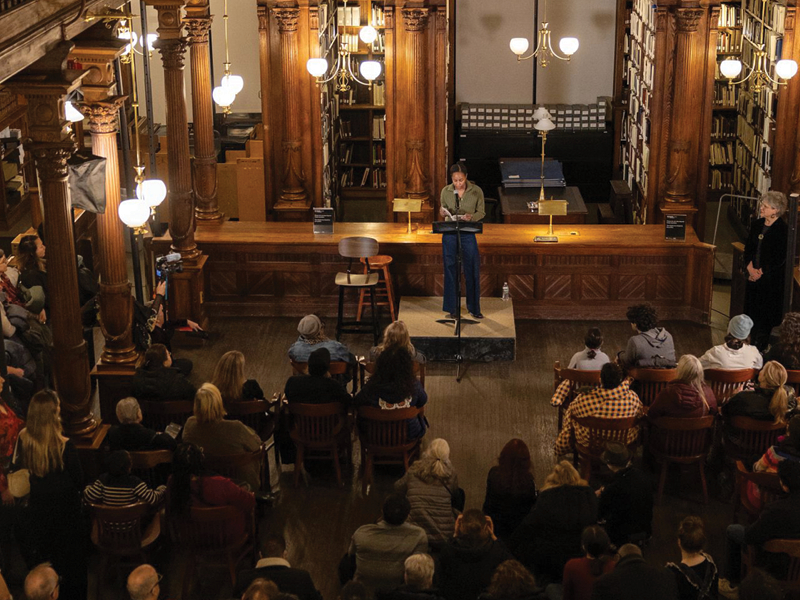
Center for Brooklyn History, Brooklyn Public Library
It's difficult to picture from where we're standing, but until the 1920s, significant portions of southern Brooklyn were still farmland. This week's Photo of the Week comes from Edgar E. Rutter (1883-1956), a commercial photographer who was employed by the New York State Public Service Commission and various other state and city agencies to photograph the sites of proposed construction projects in Brooklyn and Queens.
Running diagonally in a 9.9 miles stretch from DUMBO to Jamaica Bay, Flatbush Avenue is a central Brooklyn artery that originated as a Native trail. This photo, "looking north across Barren Island on line of extension," captures just how undeveloped parts of Brooklyn still were as late as November 1924, as the project to extend Flatbush Avenue southeast through Barren Island and into the Rockaways was getting underway.
The screenshots below, aerial photos from 1924 and 1951 taken from the NYC DOITT's historic maps, also illuminate how dramatic—and speedy—this development was. What's behind this? As Thomas J. Campanella, author of Brooklyn: The Once and Future City (2019) would have it, it was part of "the greatest residential building boom in American history," ushered in by key pieces of interwar legislation designed to address a severe housing shortage, quell rent strikes, bring down the cost of living, and jumpstart the economy. Signed into law by Governor Al Smith between 1920 and 1921, they not only incentivized construction of new housing units specifically for families, these tax rebates actively discouraged building luxury homes for the wealthy. Flash forward to the 1950s, and southern Brooklyn is "a vast dominion of mock-Tudor and Dutch Colonial homes."
In another seminal book on the history of urban development in Brooklyn, Of Cabbages and Kings County: Agriculture and the Formation of Modern Brooklyn (1999), authors Marc Linder and Lawrence Zacharias make a compelling point about the ways we think about the process of urbanization: the deterministic arguments about Brooklyn being a "city waiting to happen" fail to center the human—and profit-driven—motives for carving up these tracts of farmland into residential developments, which began to flourish once this city-sponsored infrastructure was in place. Deagriculturalization is commonly seen as inevitable, and cities as an evolution from agrarian towns, when the truth is more complicated. In fact, recent findings by authors such as David Graeber have demonstrated that in some parts of the world, settlements preceded agriculture—not, as these evolutionary models would have us believe, the reverse.

Center for Brooklyn History, Brooklyn Public Library
Read more about Brooklyn's agricultural landscape in our research guide, take a peek at the 1949 Eagle article about "Brooklyn's Last Farmer" here, and RSVP for the author talk on The Dawn of Everything: A New History of Humanity by David Wengrow & the late David Graeber on November 10th, 2021.

including Jamaica Bay, Marine Park, and Barren Island, NYC DOITT Historic Maps

The "X" on the map is Floyd Bennett Field. NYC DOITT Historic Maps.
Interested in seeing more photos from CBH’s collections? Visit our online image gallery, which includes a selection of our images, or the digital collections portal at Brooklyn Public Library. We look forward to inviting you to CBH in the future to research in our entire collection of images, archives, maps, and special collections. In the meantime, please visit our resources page to search our collections. Questions? Our reference staff is available to help with your research! You can reach us at cbhreference@bklynlibrary.org.
This blog post reflects the opinions of the author and does not necessarily represent the views of Brooklyn Public Library.
Post a Comment
While BPL encourages an open forum, posts and comments are moderated by library staff. BPL reserves the right, within its sole discretion, not to post and to remove submissions or comments that are unlawful or violate this policy. While comments will not be edited by BPL personnel, a comment may be deleted if it violates our comment policy.
eNews Signup
Get the latest updates from BPL and be the first to know about new programs, author talks, exciting events and opportunities to support your local library.







